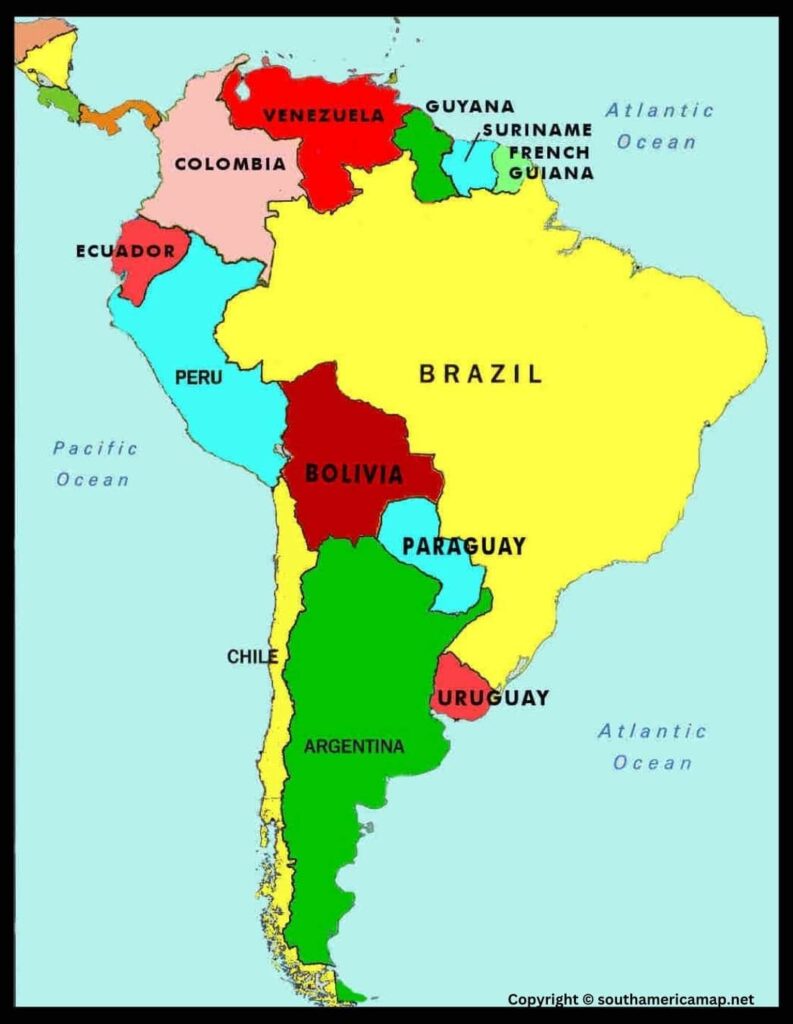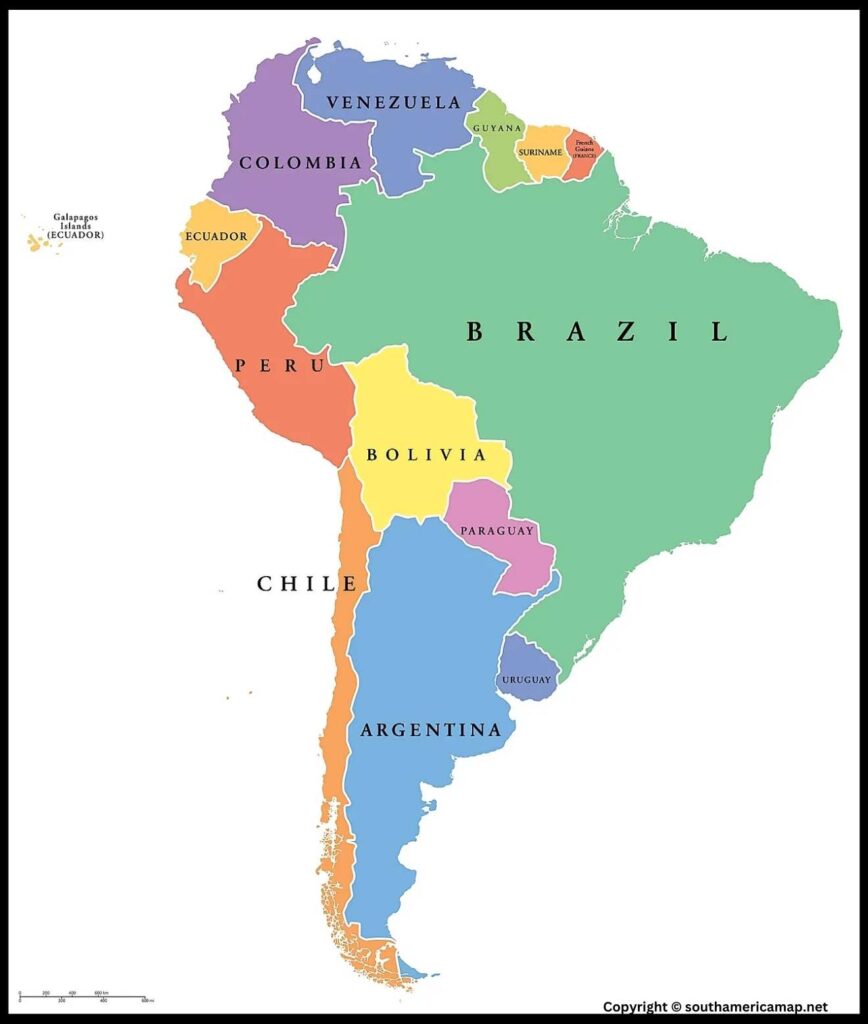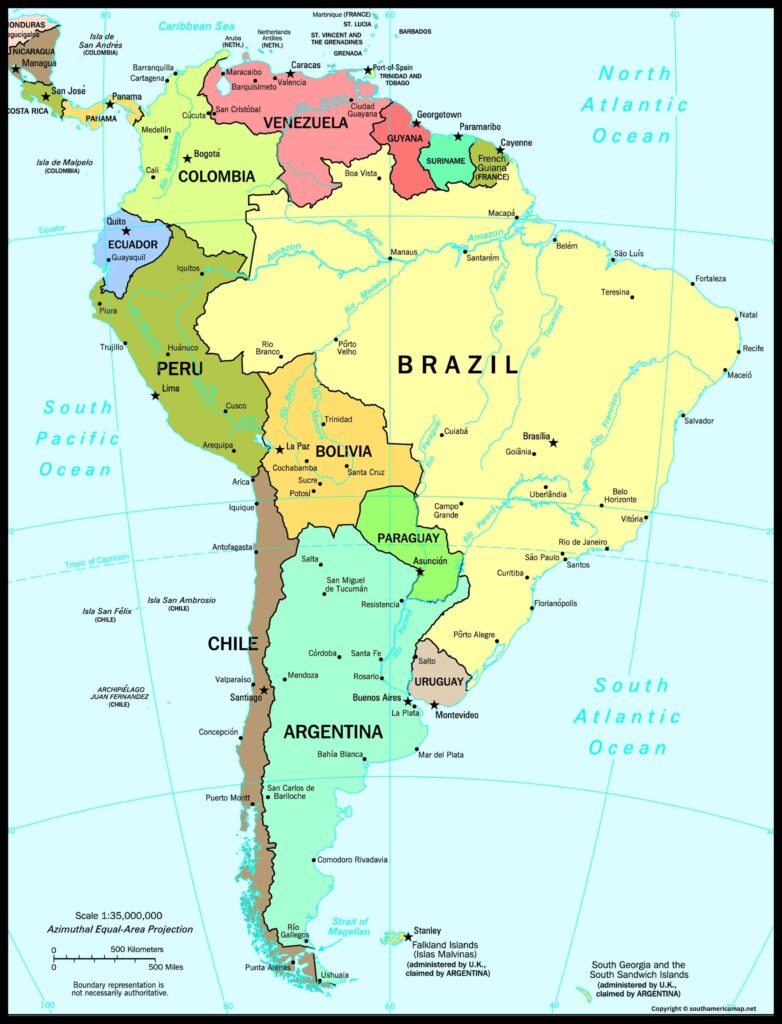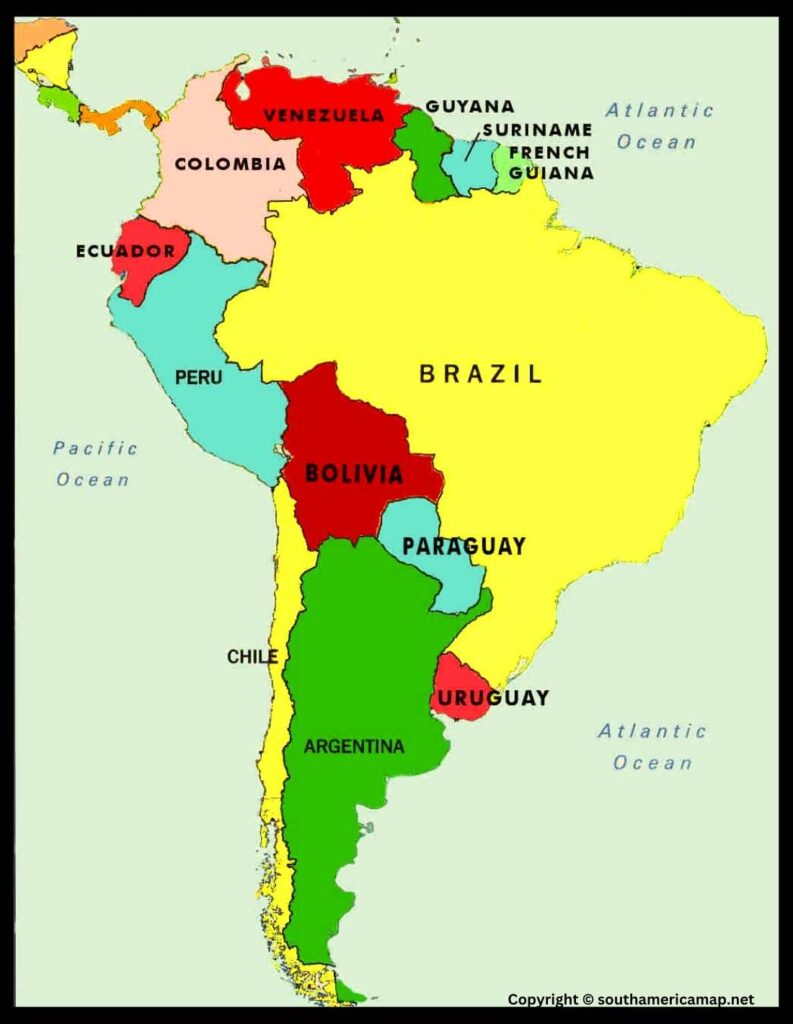The map of South American countries is extremely important by innumerable ways, which reflects relevant information related to geographical, cultural, economic and political research.
Related Post –
Map of South America Countries
Following are some points identifying the importance of countries of South America:
Geographical Awareness: The map provides a visual depiction of various geography of South America, which from mountain ranges (such as ends) to rivers (such as Amazon) and various ecosystems. This helps understand a physical characteristics that define the continent.
Political boundaries: Map is important to understand the sovereignty and regional boundaries of countries in South America, clearly showing the political boundaries of every country.
Cultural Diversity: South America is rich in cultural diversity, which has unique languages, customs and inheritance in every country. The map facilitates the view of the spread of various cultures on the continent.
Economic Relations: Map serves as a means of learning economic relations, trade and distribution of resources between South American countries. Major economic centers, ports and means of transport are easily visible.
South America Map with Countries
- Biodiversity and environmental consciousness: South America bothers the world’s most biodiversity areas, such as Amazon Rainforest. The map acts to highlight areas of ecological importance, promotes environmental consciousness and protection initiatives.
- Tourism and Travel: For passengers and tourists, a map is a necessary for the travel plan to determine the tourist destinations and chart various areas. It facilitates the discovery of iconic sites, historical sites and natural attractions.
- Educational objectives: In educational institutions, map serves as an effective tool for teaching geography, history and culture. It helps students gain diverse geography of South America and intensive knowledge of societies.
- Resource distribution: AIDS in imagining the distribution of natural resources such as map minerals, oil and cultivable land. This data is essential for economic plan and development strategies.
- Political relations and diplomacy: Policy makers and diplomats appointed maps to increase political climate, understand local conditions and create plans for global relations and cooperation.
Countries of South America Map
Global perspective: Knowledge of Geography and Geology of South America adds to a global perspective. This enables countries, companies and individuals to understand the world’s interdependence and make well informed decisions.
Emergency response and disaster management: In the time of natural disasters or human emergency situations, a map is important in coordination of emergency reaction operations, detection of affected areas and deploying resources effectively.
Map of South America with Countries
| Country | Capital |
| Argentina | Buenos Aires |
| Bolivia |
Sucre (constitutional)
|
|
La Paz (administrative)
|
|
| Brazil | Brasília |
| Chile | Santiago |
| Colombia | Bogotá |
| Ecuador | Quito |
| Guyana | Georgetown |
| Paraguay | Asunción |
| Peru | Lima |
| Suriname | Paramaribo |
| Uruguay | Montevideo |
| Venezuela | Caracas |
Finally, the South American map is an indispensable resource for many purposes, which gives important information about the physical and human geography, culture, economy and foreign relations of the continent.



